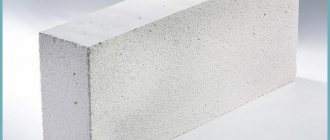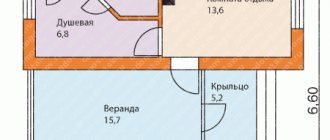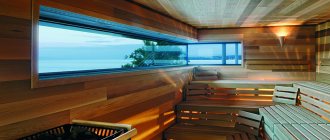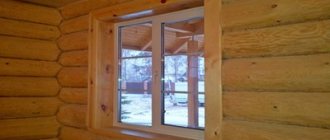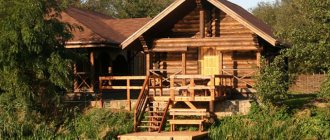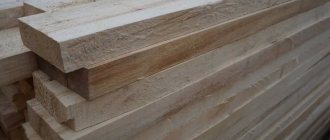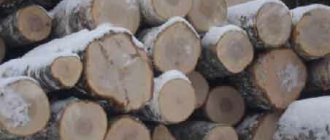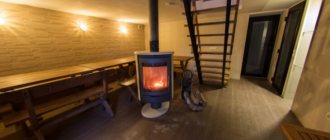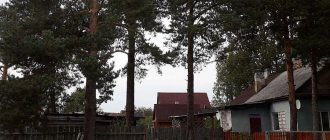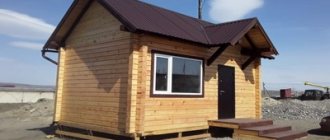The websites of construction companies are full of reviews about various lumber and its use. They discuss baths made of various types of timber, their pros and cons. These reviews are full of angry statements and gratitude towards the construction company or manufacturer. We analyzed all the reviews about saunas made of profiled timber, identified the most common ones and present them to the attention of our reader.
Reviews on official websites - believe it or not?
The declared qualities of the developer companies are confirmed by numerous reviews on the websites. But while reading, has anyone ever wondered why there are so many positive ones and no negative ones at all? In most cases, such reviews are written by the employees themselves.
Of course, you shouldn’t paint everyone with the same brush, but it’s worth thinking about when there is no dissatisfaction from customers at all. After all, as a rule, those who do nothing make no mistakes.
Before you believe such a positive statement, it is better to pay attention to whether there are photos or videos of already built baths on the site. A company that cares about its reputation offers the buyer not only to read reviews, but also to personally take them to the construction site, see with their own eyes, and talk with the owners.
The bulk of reviews are aimed at attracting the buyer's attention, nothing more.
What you should pay attention to when choosing a bath:
- Profiled chamber-drying timber is best suited for a bathhouse, but it is difficult to dry a section larger than 100 mm without following all the technology. Often, the buyer purchases a bathhouse made of material that has been dried only on the top. (For example, Evgeniy from Moscow writes: “A bathhouse made of chamber-drying profiled timber still shrinks, the timber is cracked, the walls are warped.”) To avoid this situation, you need to purchase a manual moisture meter or ask the seller to measure the humidity in front of you.
- If the bathhouse is built from profiled timber, even chamber-dried, it still needs to be additionally treated with antiseptics. It is better to carry out such processing before laying the walls, when the technical aspects of the material are easily accessible. (Kirov, Nikolai: “It took a long time for my wife and I to choose a bathhouse. From the proposed projects, we chose an inexpensive one made from 4x4 profiled timber. They suggested adding a veranda and a small attic to it. Now we use the attic as a children’s room when our grandchildren come. But, in the second year, the material began to darken at the joints and looks untidy.) Don’t forget that a bathhouse means constant high humidity, and we won’t talk about the interaction of water and wood again.
- Over time, the walls of the bathhouse still need interior and exterior decoration. (Elena, St. Petersburg: The company that sold us a set of bathhouses made of profiled timber stated that finishing the walls was not necessary. But over time, the walls cracked and lost their attractiveness. We had to do the finishing, then why did we need to spend so much money on profiled material? " ).
- The wood for building a bathhouse should not be resinous. Pine and spruce are cheaper, but at high temperatures the walls will begin to “cry”. (Valentin Stepanov, Orenburg: “The specialists offered us chamber-drying pine profiled timber to build a bathhouse. Since the external and internal finishing was not done, when heating the steam room, smudges appeared, resin drips from the ceiling, which causes discomfort.”) Avoid this phenomenon, if you have already built a bathhouse from pine timber, you can decorate the steam room with linden or cedar lining.
Advantages and disadvantages of building a bathhouse from timber
In the traditional view, a Russian bathhouse should be built from logs. This is why many people prefer a material such as OCB rather than timber. Surely you have asked the question: “Which is better, a log or timber?” There are also a lot of articles on this topic, but when you study them, you will come to a single conclusion - both options have a right to exist.
First of all, the advantages of building from timber include the simplicity and speed of construction of a log house. If desired, all work can be done with your own hands, without the help of a construction team. Analyzing numerous reviews about the construction of bathhouses from timber, we noticed that it is better to use profiled material for this purpose.
Budget baths made of timber, which involve the use of lumber with a simple rectangular or square profile, have one weak spot - the crown joints, as a result of which the walls will have to be sewn up on both sides, solving the issue of aesthetic design and operational problems.
Most owners of bathhouses made of timber in their reviews note a large number of cracks, which are also inherent in walls made of profiled material. Therefore, they regret that they did not immediately choose OCB, because it cracks less, and the very nature of the cracks in this material is more friendly to the operational characteristics of the log house.
Although it should be noted that construction from dry profiled timber forces the developer to wait from 6 to 18 months before finishing the log house. During this period, the walls will dry out and the bathhouse will shrink. In this case, the disadvantage is exactly the same as with the use of logs. Another thing is the construction of a bathhouse from laminated veneer lumber.
Bathhouse made of laminated timber: reviews
How safe is a sauna made of laminated veneer lumber for health? After all, some rooms of such a building will become very hot, hence the increased release (emission) of volatile organic compounds that are part of the glue.
Thinking about whether laminated veneer lumber is better or regular, you will understand that the answer lies on the surface: the more natural the building material is, the less likely it is that its use will be harmful to health. If you take into account the fact that how many chemicals are used during finishing work, you inevitably think about the term “environmentally friendly” in wooden house construction.
Glued laminated timber for the construction of a bathhouse is chosen a little, but nevertheless we are satisfied with the result. In the reviews you will read about the fast speed of construction and putting the bathhouse into operation - you don’t have to wait for the frame to shrink to complete the finishing. There are no complaints that you can’t breathe in this building or that you feel unwell after bath procedures.
What you should pay attention to when choosing a bathhouse: reviews from experts
- For a bathhouse, profiled chamber-drying timber is best suited. However, it is quite difficult to dry a section larger than 100 mm, following all the technology. Often, a buyer buys a bathhouse made of material that has only been dried on top (some on the forums write that bathhouses made from such timber still shrink, the walls warp, and the timber cracks). To eliminate this situation, you need to buy a manual moisture meter or ask the seller to measure the humidity in your personal presence.
- If the bathhouse was built from chamber-drying profiled timber, it still requires additional treatment with antiseptics. It is better to carry it out even before the walls shrink, when the technical aspects of the material are easily accessible (we also encountered situations where an attic and a veranda were attached to a 4x4 bathhouse, but in the second year the material at the joints began to darken and look ugly). Do not forget that high humidity constantly reigns in the bathhouse, and you probably yourself understand about the interaction of wood and water.
- Over time, the walls of the bathhouse still require external and internal finishing. Here’s what Elena from Moscow writes on the forum: “The company that sold us a bathhouse set made of profiled timber claimed that there would be no need for wall finishing. However, over time, the walls began to crack and lost their visual appeal. We had to spend money on finishing, then why was it necessary to spend money on profiled material?”
- The wood for building a bathhouse should under no circumstances be resinous. Spruce and pine are cheaper, but at high temperatures the walls will “cry”. This is what Mikhail writes in his review: “The specialists offered us chamber-drying pine profiled timber for the construction of a bathhouse. Since we abandoned the interior and exterior decoration, when heating the steam room, streaks were visible, resin was dripping from the ceiling.” To eliminate this phenomenon, you can decorate the steam room with cedar or linden lining, if you have already given preference to pine timber.
Positive aspects of profiled baths
If the kit or material for building a bathhouse was ordered from a company that values its reputation, then the reviews will be positive and will fully meet the stated advantages:
- Construction is cheaper than using other materials. Here's Sergei's review: “For a long time we couldn’t choose the material for building a bathhouse. Made of brick - expensive, they calculated the rounded log, and were also upset. Plus, insulation and finishing are added to additional costs. Construction company specialists advised us to build a bathhouse from profiled timber. The project was assembled independently from a ready-made kit. I made the foundation with my son. It turned out quite quickly and inexpensively.”
- Assembly does not involve the use of additional equipment and is carried out in the shortest possible time. This is what Oleg writes: “We have a small plot. Everything is built up and planted. They thought that there simply wouldn’t be room for a bathhouse. It turned out that you can make a pillar foundation and use 100x100 profiled timber for construction. We did everything together - me and my son. It took three weeks to build the bathhouse, including the interior and drainage systems.”
- No additional wall decoration is needed. Maxim’s review, left on the forum a month ago: “I signed an agreement with a construction company for the construction of a turnkey bathhouse. They came to my site and took measurements. The material was relatively inexpensive. The construction took 2 weeks. I controlled all stages myself. I carefully examined the walls for cracks. We managed to save a lot on insulation. A bathhouse made of profiled timber is well suited for budget-conscious owners.”
- Eco-friendly and warm. On this occasion, we found a positive review from Andrey from Moscow: “We immediately decided to build a bathhouse from profiled timber. It is more environmentally friendly compared to laminated timber. We chose a section of 150x150. The bathhouse gave almost no shrinkage. The walls are beautiful and smooth. It takes 2 hours to heat the bathhouse to 90 degrees.”
- Minimal shrinkage in case of chamber drying. Anastasia from St. Petersburg: “I specifically measure how much the bathhouse made of profiled timber that has been kiln-dried has sagged. The seams have not come apart. Losses are minimal. We’ve been using it for the second year and we’re happy with everything.”
If we combine all the good and bad about profiled baths, we get the following:
- Baths do not require the construction of a heavy foundation, which saves time and money.
- You can assemble and bring the bathhouse kit yourself. Because the joints are already cut and quickly assembled, and the material is light.
- If you build in strict compliance with all rules and regulations, then additional insulation of the walls will not be needed.
- The appearance of the walls is attractive and does not require additional finishing.
- More environmentally friendly, since no chemicals or various adhesives are used in production.
- Profiled timber is no worse than brick, but will cost half as much.
Basically, all the shortcomings are associated with poor quality materials or construction. This can be avoided if you pay enough attention to choosing a construction company. Another point worth paying attention to is shrinkage. Of course, any tree will dry out, but with chamber drying the shrinkage will be minimal. In this regard, the cost will be higher compared to a log bathhouse, although the first option does not require additional insulation and finishing.
Positive about profiled baths
If the material or bath set was ordered from a company that values its reputation, then the reviews will be good and correspond to the stated advantages:
- Construction is more economical than using other high-quality materials. (Review from Sergei Mikhailov from Kazan: “We spent a long time deciding what to build a bathhouse from. Brick was expensive, we calculated a rounded log and were also disappointed. In addition, finishing and insulation added to the additional costs. Specialists from a local company suggested to us the option of a bathhouse made from profiled timber. Project We assembled it ourselves from a ready-made kit. My son and I also made the foundation. It turned out cheap and pretty quickly.")
[ads1]Assembly does not require additional equipment and can be done in the shortest possible time. (Our plot is not large. Everything is planted and built up. We thought that it was impossible to build a bathhouse. It turned out that we could make a lightweight pillar foundation and take light material - profiled timber. We purchased a cross-section of 100x100. We worked together with our son. The bathhouse was built in three weeks together with drainage and interior."- No additional wall finishing required. (Nikolai Mikhailovich Moscow: “I entered into an agreement with a developer company for a turnkey bathhouse.” They came and measured everything completely free of charge. The material was inexpensive. They built everything in 14 days. With my direct supervision. I specially inspected the walls, not a single crack. And I saved a lot on insulation. A bathhouse made of profiled timber is suitable for economical owners.")
- Warm and environmentally friendly. (Vasilisa Stepanovna, Surgut: “They decided to immediately build the bathhouse from profiled timber. This material is more environmentally friendly compared to laminated veneer lumber. For the walls, they chose a section of 150x150 chamber drying. The bathhouse practically did not shrink. The walls are smooth and beautiful. You can heat it in 2 hours to 900C" .
- Minimal shrinkage during chamber drying. (Victoria, Ulyanovsk: “I specially measure the shrinkage of a chamber-drying bathhouse made of profiled timber. Losses are minimal. The seams have not come apart. This is the second year we’ve been using them, I recommend these bathhouses to everyone.”
Conclusion, based on reader feedback
If we combine all the good and bad about the profiled baths in the reviews, we get:
- It does not require a heavy foundation - this is an additional expense of funds and personal time.
- You can assemble and deliver a complete bathhouse kit yourself. Because The joints are already cut and assembled quickly, and the material is light.
- If you build in compliance with all the rules and regulations, then additional insulation of the walls will not be necessary.
- The appearance of the walls is beautiful even without additional finishing.
- More environmentally friendly, since various adhesives and chemicals are not used in production.
- Profiled timber is no worse than brick, but is 2 times cheaper.
The disadvantages are mainly related to poor quality construction or materials. This can be avoided by carefully choosing the manufacturing company. The second thing I want to focus on is shrinkage. Yes, any tree will dry out, but with chamber drying the shrinkage is minimal. And the cost, higher than that of a log bath, is smoothed out by additional insulation and finishing of the first option.
Features of wall construction
After the foundation is poured, it is given time to consolidate. After which it is covered with waterproofing material. Roofing material is quite suitable for these purposes. This approach will not allow moisture to have a negative impact on the first crown of the timber structure.
Options for connecting profiled timber to each other.
The first element of the log house should be a board, preferably made of larch, approximately 60 mm thick. The lower part can become saturated with moisture and rot over time; with a board, its replacement will occur faster than the timber will be laid immediately. In the next few rows, for the same reasons, it is better to use larch crowns connected at the corners. Jute material serves as a good sealant in the spaces between the joints of the beams. Thus, the structure acquires strength and rigidity.
The floor joists on the first floor cut into the second crown. For a structure such as a bathhouse, partitions are not only part of the internal design of the building, but also do an excellent job of supporting the structure, especially if it is two-story. They are erected only after the final installation of the log house along the lines of the logs.
After the construction of the walls is completed, beams for the roof and ceiling are laid on them. Then a covering is laid on top to make it convenient for the worker to move. After installing the rafter system, it is recommended to build a gable roof without insulating the attic; in this case, only the ceiling is insulated. Pediments are produced using technology similar to frame ones. In the future, they are sheathed with material depending on their own preferences. Imitated timber or lining works well. The roof for a bathhouse does not have to be of a complex design.
Question price?
Reviews will always help you make a choice, but the price will pleasantly surprise readers:
- A 3x4 m bathhouse on the 1st floor will cost from 185 thousand rubles.
- One-story with attic 4x5 from 265 thousand rubles.
- Two floors with a small terrace 6x8 from 397 thousand rubles.
Basically, the price is related to the size of the bathhouse, the number of rooms, the presence of an attic or number of floors, and of course the cost of the material itself. Of course, these are ready-made kits without assembling them and installing the foundation. You will also have to work on the drainage system and ventilation yourself.
Whatever bathhouse you decide to build from profiled timber, do not neglect the experience of others. And numerous reviews from various construction forums will tell you about this.
The right foundation for a bath
Options for a timber bathhouse foundation.
Most often, two main types of foundation are recommended for the construction of baths. For the most part, home craftsmen prefer them because they are durable, reliable and do not cause additional difficulties during laying: these are columnar and strip shallow foundations.
When choosing, the main criterion is the nature of the soil. If the soil is fertile or is a mixture of earth, clay and sand, and the groundwater is below 2 m from the surface of the earth, then in this case a strip foundation would be the ideal choice. The foundation strip has a standard width of 300 mm. To build a foundation, you will need to have reinforcing bars with a diameter of 12 mm and steel bars with a diameter of 8 mm; they will need to be connected to each other.
The choice between a columnar and strip foundation arises when the soil consists of fine gravel or sand.
